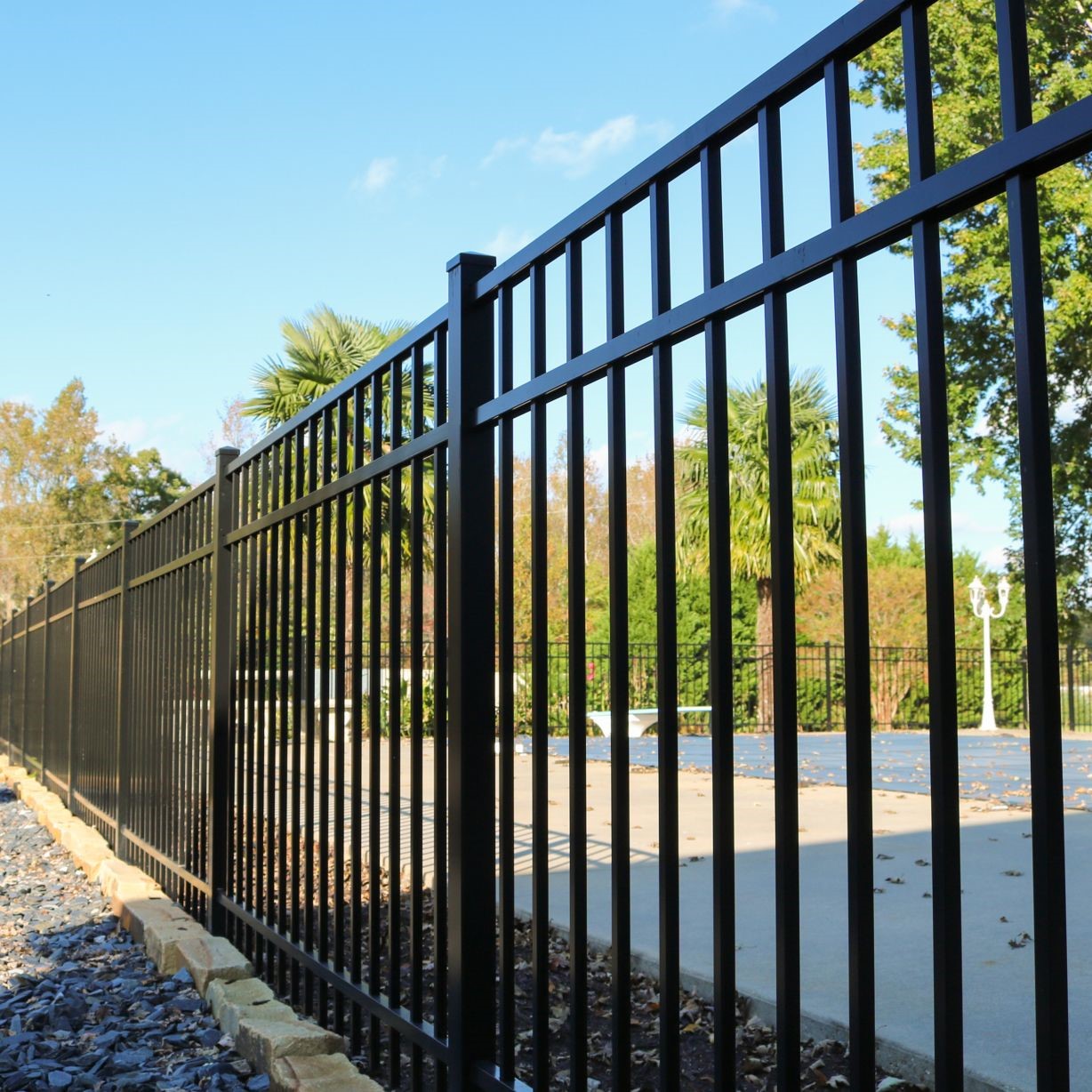One of the considerations when evaluating cost-effectiv […]
One of the considerations when evaluating cost-effectiveness is the balance between purchase cost and lifespan. While aluminum fences may have a moderately higher upfront cost than some alternative materials (such as chain-link or wood), they often deliver long-term savings.

Durability: Aluminum is naturally resistant to rust and corrosion, unlike iron or steel, which require galvanizing or frequent coatings. This quality makes aluminum ideal for outdoor industrial environments exposed to varying weather conditions.
Return on Investment: Once installed, aluminum fences tend to last for decades with minimal repair or upkeep. This long service life reduces replacement frequency and related expenses.
The durability of aluminum contributes to a lower total cost of ownership over time, especially in high-traffic or exposed areas.
Industrial settings often demand efficient infrastructure that minimizes labor and ongoing service. Aluminum fences excel in this regard.
Corrosion Resistance: Aluminum naturally forms a protective oxide layer that resists corrosion. Many modern aluminum fences are also powder-coated for added protection and aesthetics, reducing the need for repainting or refinishing.
Cleaning: Routine maintenance involves simple washing with water and mild soap, which keeps the fence looking clean without the need for specialized products.
Minimal Repairs: Unlike wood, which can warp or rot, or steel, which can rust, aluminum requires few repairs over its lifespan.
Reduced maintenance translates directly into labor cost savings and fewer interruptions to business operations.
Cost-effectiveness also includes how well the fence performs its intended function—primarily, providing security and structural separation in an industrial setting.
Design Flexibility: Modern aluminum fencing systems can be designed with reinforced pickets, anti-climb features, and customizable height options, offering robust perimeter security.
Stability: Though lightweight, industrial-grade aluminum fencing uses thicker walls and secure anchoring systems to withstand wind loads, impacts, and tampering.
Gate Integration: Many aluminum fence systems support automated gate mechanisms or access control hardware, allowing seamless integration with security infrastructure.
When evaluated for functionality and adaptability, aluminum fences provide effective protection without the complications of heavier or more maintenance-intensive materials.
While industrial facilities prioritize function, visual impression also matters—especially in commercial or public-facing locations. A well-maintained perimeter reflects positively on the organization.
Powder-Coated Finishes: Many modern aluminum fences come with powder-coated surfaces available in black, bronze, white, or custom colors. This ensures a uniform and professional appearance.
Customization: Industrial aluminum fences can be designed to match existing architectural features, including flat-top, spear-top, or ornamental styles.
A clean and organized exterior enhances the visual value of a property, especially when dealing with clients, visitors, or regulatory inspections.
Installation time and ease also contribute to cost-effectiveness. Faster installation reduces labor costs and limits disruptions to ongoing operations.
Lightweight Material: Aluminum's light weight compared to steel or iron makes it easier to transport, handle, and install. This reduces equipment needs and labor strain on site.
Modular Design: Many aluminum fence systems are prefabricated in panels, allowing for quicker assembly with minimal customization needed on-site.
For large-scale industrial sites, the efficiency of aluminum fence installation results in measurable project time savings.
Sustainability is increasingly important in modern industrial planning. Aluminum fencing aligns well with environmentally conscious goals.
Recyclability: Aluminum is recyclable without degradation in quality. End-of-life fences can be repurposed, reducing material waste.
Low Impact Finishes: Powder coating is a dry finishing process that emits fewer volatile organic compounds (VOCs) compared to liquid paints, contributing to a cleaner production process.
These factors can support corporate sustainability initiatives and potentially contribute to green building certifications.